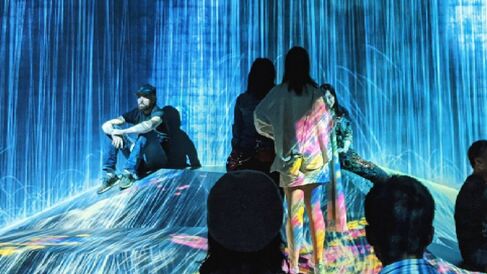Terminology and Key Concepts

What do we mean by Blended Learning?
The concept of blended learning is broadly seen as the purposeful design of face-to-face and online teaching & learning, with effective and appropriate integration of technology-enabled components to enhance the educational experiences. The intent here is a key factor in working towards successful blended learning as any digital or remote activities or experiences need to be thoughtfully designed into a curriculum as integral components, rather than added in as an after thought. Simply adding technology into a programme of study often leads to ineffectual use from both staff and students and a lack of commitment to developing their potential, whereas looking to use technology to support and augment existing experiences can increase flexibility, promote further academic collaboration, and improve modes of interaction, whilst mitigating risks of arbitrary workload increases.
Over the years blended learning has become an umbrella term to encompass a broad range of teaching, learning, and assessment containing some technology-enabled or digital elements. Whilst use of the term might vary, the main takeaway is to understand that it is a spectrum of experiences that enable educators to explore vast possibilities within their curricula.
Terminology (A-Z)
- Asynchronous learning that does not occur in the same place or at the same time for a whole cohort. Students can access resources and communicate at any time and are not restricted to accessing this learning at any specific time. Enables students to learn at their own pace in their own time. Building a Taxonomy for Digital Learning
- Blended Learning is the purposeful design of face-to-face and online teaching & learning, with effective and appropriate integration of technology-enabled components to enhance the educational experiences.
- Digital Learning/eLearning indicates any potential use of technology within an education context but typically refers to computer-based activities. This does not specifically imply a location for education so could represent in-person computer-based activities both independent and collaborative, or activities intended to be completed away from the classroom either synchronously or asynchronously.
- Digital Literacy refers to an individual's capacity and ability to use digital information and technologies to find, evaluate, create and communicate effectively. Required digital literacy will vary depending on role (in the case of staff) and course or subject (in the case of students). Where increased literacy is required for study or as part of a role, there should always be relevant support provided either by Department, College, or Central Services.
- ePortfolios represent a body of work created by students using digital tools and platforms to share and submit assignments. Students can engage with multiple forms of media (e.g., blogs, reflective journals, images, videos, podcasts, websites, and more) and evidence when developing their own portfolio.
- Flipped Learning refers to the provision of content or information in a digitally accessible format prior to an in-person session to elevate discussions and allow room for interactive collaboration between and with students. A typical approach is to provide a short topic video, pre-recorded lecture, assigned reading, or podcast to students ahead of a scheduled session, then design a session where students delve deeper into the content with one another in a structured and scaffolded experience.
- Hybrid Audience is a more passive learning experience in which students are required to observe and consider delivered materials with little to no interactive engagement. You can read more detail regarding Hybrid models here.
- Hybrid Teaching & Learning isan interactive and participation focused session with a higher demand for technology and resources to facilitate effective engagement and presence. You can read more detail regarding Hybrid models here.
- Lecture Capture is the recording of a live lecture (in-person or online) to be uploaded either as a video or podcast for students to view, either in real-time or after the lecture has finished. The University of Cambridge supports Panopto as our centrally managed lecture capture platform. Currently the primary method of lecture capture provided by central services is scheduled video recording. We do not currently provide services for manual lecture capture or audio-only recordings.
- Online/Remote Learning is the facilitation of teaching and learning experiences (e.g., lectures, assignments, supervisions, quizzes, seminars etc.) using online platforms such as Moodle, Teams, or Panopto or designed in such a way that students are able to effectively engage whilst away from a physical classroom or campus.
- Synchronous learning that takes place with participants all engaging with material in real time, although not necessarily in the same place (for example, some students may participate onsite while others may participate remotely, both at the same time). Building a Taxonomy for Digital Learning
- Virtual Learning Environments (VLE) are platforms designed for supporting teaching, learning and assessment and provide a space for educators to facilitate online engagement through resources and activities. VLEs can simply be used as information repositories but can be more effectively utilised to augment learning experiences for students through a wide range of tools. The University of Cambridge supports Moodle as our VLE
- Web Content Accessibility Guidelines (WCAG) are an internationally recognised set of recommendations for improving web accessibility. They explain how to make digital services, websites and apps accessible to everyone, including users with impairments to their vision, hearing, mobility, and thinking and understanding. Many of these recommendations are implemented as standard in platforms such as Moodle and our Drupal websites, however, some do require individual input such as captioning videos and providing descriptions for images. Find out more on gov.uk and the World Wide Web Consortium (W3C).
- Webinars are online learning or training activities using video conferencing tools such as Microsoft Teams to provide an interactive workshop or seminar. They are typically synchronous to maximise engagement and augment the experience beyond simple information delivery. Webinars can easily be recorded and made available for reference after the live session.
